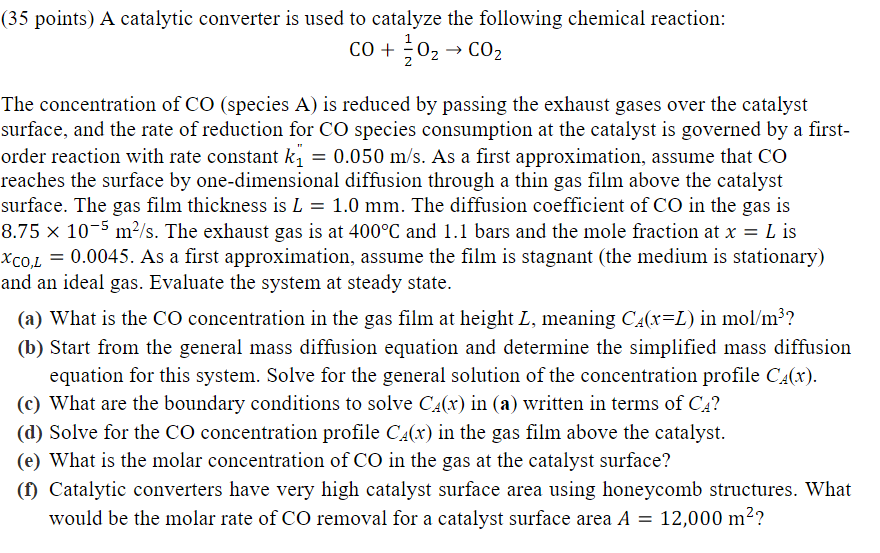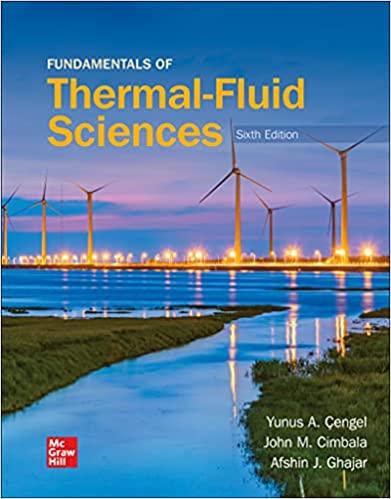Answered step by step
Verified Expert Solution
Question
1 Approved Answer
( 3 5 points ) A catalytic converter is used to catalyze the following chemical reaction: C O + 1 2 O 2 C O
points A catalytic converter is used to catalyze the following chemical reaction:
The concentration of species A is reduced by passing the exhaust gases over the catalyst surface, and the rate of reduction for species consumption at the catalyst is governed by a firstorder reaction with rate constant As a first approximation, assume that CO reaches the surface by onedimensional diffusion through a thin gas film above the catalyst surface. The gas film thickness is The diffusion coefficient of in the gas is The exhaust gas is at and bars and the mole fraction at is
As a first approximation, assume the film is stagnant the medium is stationary
and an ideal gas. Evaluate the system at steady state.
a What is the CO concentration in the gas film at height meaning in
b Start from the general mass diffusion equation and determine the simplified mass diffusion
equation for this system. Solve for the general solution of the concentration profile
c What are the boundary conditions to solve in a written in terms of
d Solve for the concentration profile in the gas film above the catalyst.
e What is the molar concentration of in the gas at the catalyst surface?
f Catalytic converters have very high catalyst surface area using honeycomb structures. What
would be the molar rate of removal for a catalyst surface area

Step by Step Solution
There are 3 Steps involved in it
Step: 1

Get Instant Access to Expert-Tailored Solutions
See step-by-step solutions with expert insights and AI powered tools for academic success
Step: 2

Step: 3

Ace Your Homework with AI
Get the answers you need in no time with our AI-driven, step-by-step assistance
Get Started


